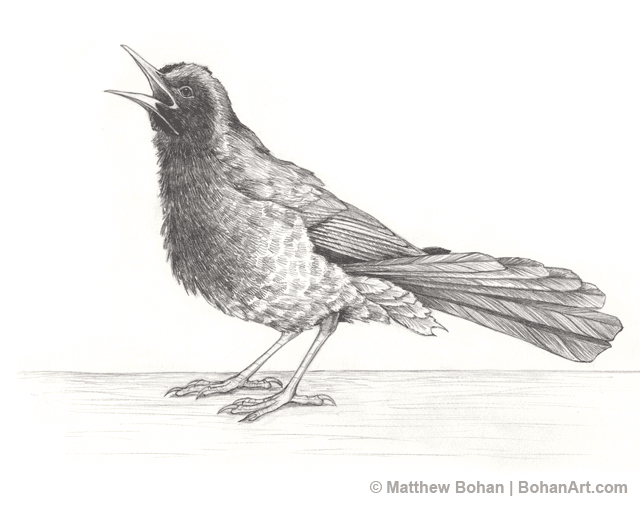
Boat-tailed Grackles shimmer with iridescence. What appears to be jet black fades into beautiful metallic blues, greens and purples. Of course all of that gets lost in a simple pencil sketch! At some point I’ll need to render this in watercolor to brag up some of its colors.
Interestingly, the blue coloration in birds isn’t from pigments at all—it’s a structural phenomenon. Microscopic structures on the feathers cause interference in the reflected lightwaves leaving the feathers. If you look at one of these feathers with backlighting, you’ll see no blue color at all, just a brown-gray. When light is allowed to reflect off that same feather, the magic happens. The colors from iridescent feathers vary in hue depending on the angle they are viewed from, producing a rainbow of possible colors.
Green pigments in birds are usually caused by yellow pigmented feathers with the structural “blue.” The combination of the two makes the feathers seem green. The African Turacos are an exception. These attractive birds have a unique green pigment for a “true green.” Appropriately the green pigment is called turacoverdin, meaning Turaco Green! Turacos also possess a unique red pigment called turacin. These African birds seem to be into proprietary coloration. They aren’t just a pretty face.
Grackles belong to the Icteridae family of birds, which includes the Meadowlarks, Orioles, New World Blackbirds and Cowbirds. Not all of these birds have the greatest reputations, including the Grackles, which can be piggy at feeders.
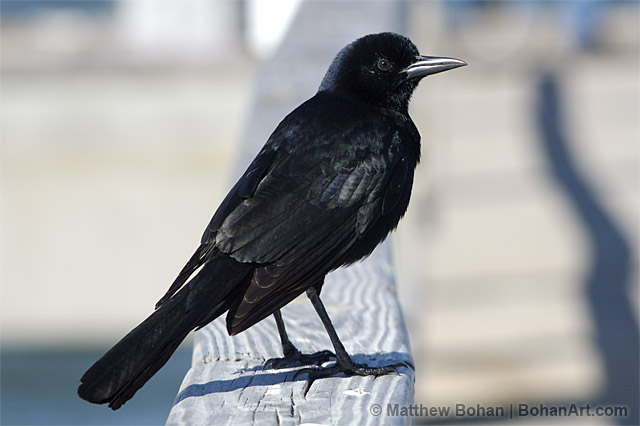
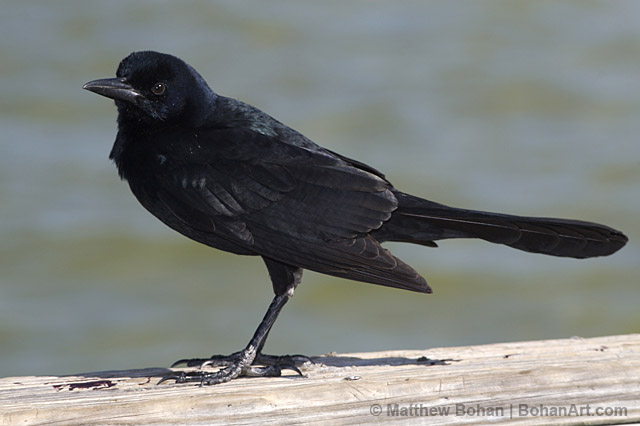
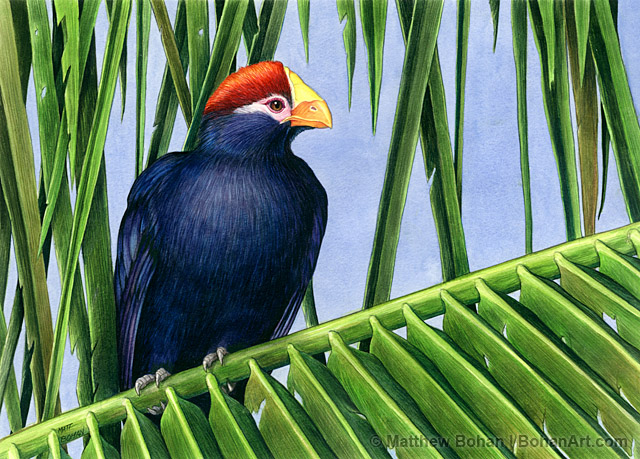
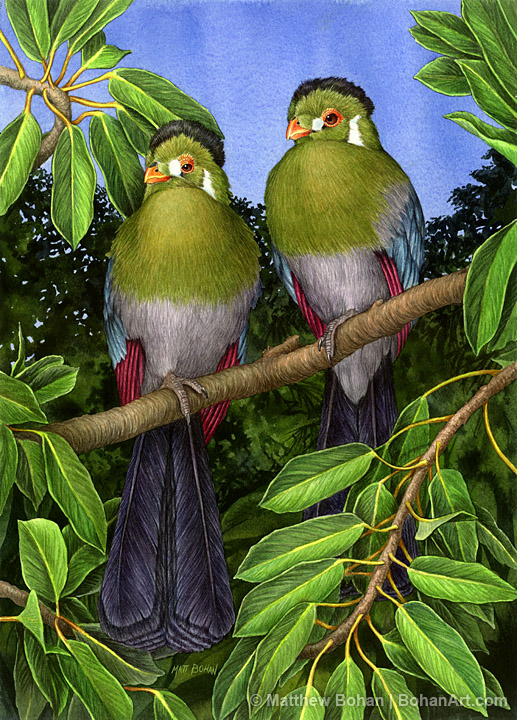

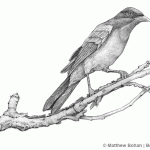
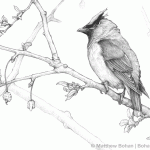
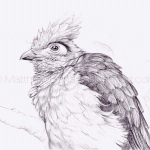
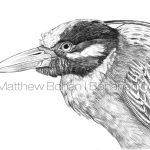
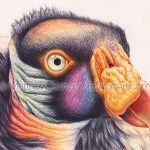
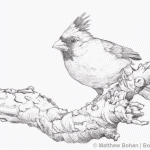
Leave a Reply